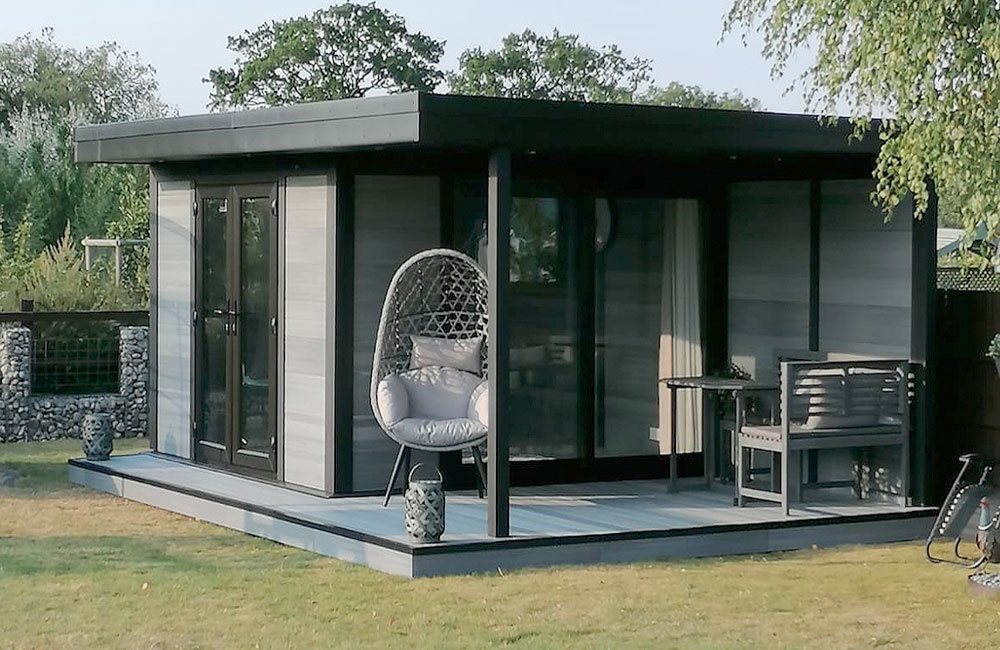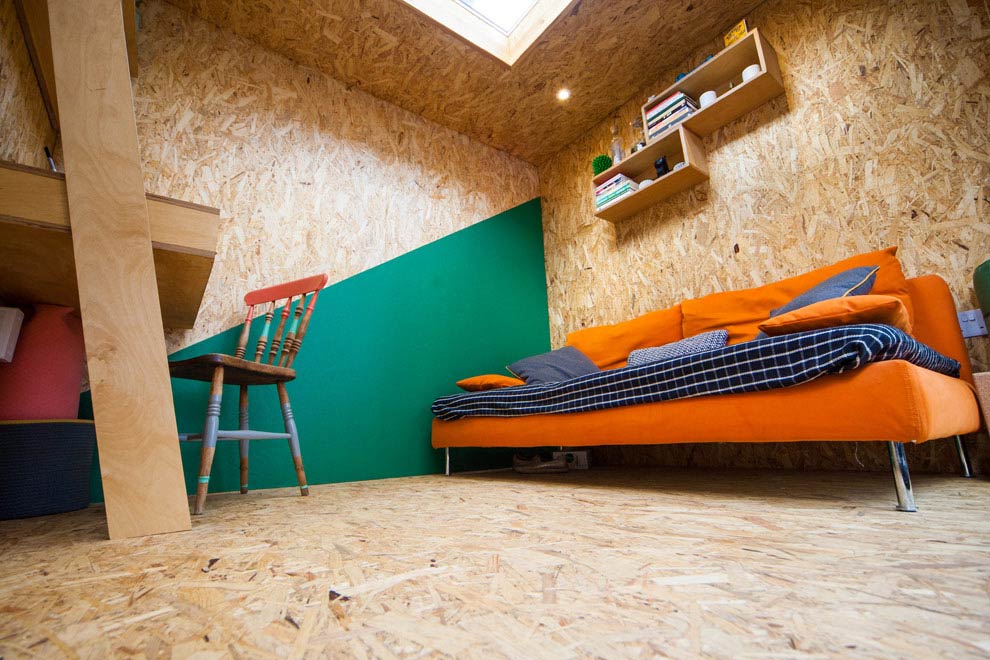New Tips For Planning Permission On Garden Summer Houses
New Tips For Planning Permission On Garden Summer Houses
Blog Article
What Planning Permits Are Needed To Build Garden Rooms, Etc. In Conservation Areas
To safeguard the aesthetics and character of conservation areas when creating extensions, gardens or conservatories in these designated zones, certain restrictions are in place. Planning permission for conservation areas is determined by the following considerations:
Conservation areas may require planning permission for any building extension, construction or other type which is normally covered by permitted development rights. This includes garden buildings, sheds and outbuildings.
Size and Scale
The planning authority may require approval for any structure in any size if the dimensions are deemed as detrimental to the conservation zone. There are stricter controls over the size and scale of extensions or new buildings compared to non-designated areas.
The location on the property
The majority of the time, planning permission will be required for any buildings or extensions located on the front or side of a house. Rear structures might also require permission if the structures are seen from public areas or if they affect the nature of the property.
Materials and Design
The design and selection of materials are crucial in conservation areas. The materials that are used in any extension or new construction should be in line with the architectural or historic interests of the area. To ensure that these requirements are met, planning permission is required.
Demolition:
Planning permission is usually required in conservation zones to make sure that the changes are in keeping with an area's unique nature.
Height Restrictions
In conservation areas there are higher height restrictions in conservation areas. A structure over 2.5 meters in height (especially within two meters of the boundary line) will probably require planning permission.
The Impact on the Surrounding Environment:
Planning permits are required for any building or extension that will have a significant impact on the appearance or setting of the conservation area. This includes views to and from the area.
Use of the Building
It is possible that a garden structure or room may fit within the permissible size limit, but the intended purpose like an office, home studio or other habitable space, might require approval for planning.
Changes and expansions
Planning permission is usually required for extensions that are larger than the specified limit or that alter the exterior appearance of a structure. This is the case for conservatories and other significant changes.
Curtilage Structures:
A conservation area requires planning permission for any structure within the curtilage. This includes any extensions, new outbuildings or any alterations.
Protected Trees
Conservation areas have trees that are protected. A tree works permit might be required if are planning a construction that will affect trees.
Local Authority Guidelines:
Local planning authorities may establish particular guidelines to govern conservation zones. They may also have detailed guidelines on what is permissible and not, adapted to the specific nature of the region.
In summary, planning permission for a conservation zone requires an extensive assessment of how the proposed garden rooms, conservatories, outhouses, garden offices or extensions will impact on the historical and architectural character of the area. It is important to consult the local authority before you begin when designing your project. This will ensure it is compliant with all relevant guidelines and regulations. Check out the recommended ware garden rooms for website info including ground screws vs concrete base, what is a garden room, garden room or extension, what size garden room without planning permission, my outhouse, out house, garden office electrics, outhouse garden rooms, garden rooms hertfordshire, costco garden room and more.
What Is The Required Planning Permission Required For Gardens, Etc.?
There are more stringent rules and guidelines to follow when deciding to construct conservatories or garden rooms on the property of an historic building. Here are the essential aspects of planning permissions for these projects: Listed Building Consent:
Most of the time, any alteration of extension, alteration or construction in the immediate vicinity of a listed property requires both planning and listed building approval. It is vital to be aware that any changes could alter the characteristics of a property listed.
The impact on the character of historical characters
Planning applications are required for any construction or extension that may alter the historic characteristics of the listed property or its setting. Included in this are gardens and outbuildings.
Materials and Design
The design and materials must reflect the historical and architectural significance of the existing structure. Planning permission is required for custom designs or the use of traditional construction materials.
The building is situated in close proximity to the listed building
New constructions built near an historic property will be scrutinized for the effect they can have on its setting and appearance. It is necessary to obtain planning permission in order to ensure that new buildings don't change the appearance of the building.
Size and Scale
The dimensions and size must be proportional and compatible with the structure listed. It is more likely that larger structures will require detailed planning and assessment.
Location on the Property
Planning permissions can be affected by the site of a new structure, regardless of whether it is front, on the side or at the rear of a listed building. Locations that are visible, or that affect key views of the structure, typically require a more thorough evaluation.
Changes to the Internal Structure
Even if it's an independent structure, any interior changes to listed buildings (such as the construction of new entry points) need planning permission and listed-building consent.
Conservation Areas that Overlap
Additional restrictions may apply if the listed building also is located within a conservation area. Planning permission is required to ensure compliance with listed buildings and conservation area regulations.
The use of the building:
Planning permission may be needed dependent on the purpose for which the garden room or outbuilding will be used for. Applications that require a significant change, like a commercial or residential space are scrutinized more carefully.
Structure:
The building consent listed and permission for planning are required for any work that may affect the structural integrity of the building. This is to ensure that both older and new structures can be properly and seamlessly integrated.
Local Authority Guidelines:
Local authorities often have specific guidelines for listed buildings, outlining what types of modifications and construction are permitted. Planning permission is needed to ensure that these guidelines are observed.
Professional Assessments
Conservationists usually conduct thorough analyses when reviewing proposals to work on listed structures. These assessments help determine if the proposed changes are appropriate and to support the application for planning approval.
Summary: Planning permission and listed-building consent are required almost always when creating conservatories, garden rooms or outhouses. The same is true for extensions or garden offices as well as garden offices that are connected to listed properties. Consult with your local heritage and planner prior to beginning the planning process to ensure compliance to the relevant regulations and to ensure the preservation of the architectural and historical integrity of the building. See the top rated herts garden rooms st albans for website examples including costco outhouse, costco garden rooms, how to get power to a garden room, what size garden room without planning permission, garden rooms in St Albans, costco outbuildings, garden room permitted development, best heater for log cabin, outhouse garden rooms, what size garden room without planning permission uk and more.
What Is The Planning Permit Required For Garden Rooms And So On. In Relation To Utilities And Infrastructure
If you are planning to construct an outdoor space, conservatory, outhouses (garden offices) or extension infrastructure and utility considerations will be essential. This could impact the necessity for a permit to plan. Here are the major aspects to take into consideration. Water Supply and Drainage
It may be necessary to obtain a planning permit in the event that the structure is connected to the local water supply or drainage system. Local water authorities could be required to assess the impact of any new structure on the water and sewage systems in the area.
Gas and Electricity Connections
Planning permission may be required when the building is to be connected to gas or electricity. These connections must comply with the building and safety regulations.
Utility Easements
Planning permission might be required when the proposed structure is located within utility easements. Local utilities may be required to approve any construction that takes place within these areas.
Septic Tanks and Sewage Systems
It is important to obtain planning permission if you are installing a septic tank or sewer system in your home. The system must be in compliance with rules regarding health and environment.
Drainage and Surface Water Management:
Planning permission may be required to deal with the drainage issue and surface water runoff from the new structure. You might need to take measures to avoid flooding, erosion, or water pollution.
Access to Utilities for Construction
Planning permission might be required for temporary access to utilities like water for construction. The temporary connections are subject to environmental and safety laws.
Local infrastructure impacts:
The local authority must determine whether the infrastructure in place can help support the growth. This includes roads, utilities, as well as public services. Local authorities must determine if existing infrastructure can accommodate a new development.
Waste Management:
The planning permission could include requirements regarding recycling and disposal of waste either during or following construction. It is crucial to make sure that there are sufficient waste disposal and recycle provisions in the place.
Energy Efficiency and Renewable Energy:
It could be necessary to get planning permission prior to installing energy-efficient systems or renewable energy sources (such solar panels or heat pumps) in your new home. The construction code and environmental standards must be followed.
Telecommunications and Internet connectivity:
If the proposed structure requires telecommunications or internet connections the planning permission might be needed. In order to ensure that telecommunications infrastructure is compliant with standards and regulations It is crucial that the infrastructure adheres to these.
Access to the Footpath and Road:
It may be necessary to obtain planning permission to build or modify footpaths and access roads of an entirely new structure. The construction of roads and footpaths should be in line with safety standards.
Accessibility of the public transport system:
A planning permit may be needed if the new structure impacts transportation facilities for public use like bus stops and train stations. The public transport infrastructure must adhere to all regulations and standards.
In short, utilities and infrastructure considerations are critical factors in determining the need for planning permission for conservatories, garden rooms, outhouses, garden offices, or extensions. Planning consultation should be initiated early to ensure that the building is in compliance with all applicable standards and regulations. See the top rated insulated garden rooms for more advice including best heater for log cabin, what size garden room without planning permission, what size garden room without planning permission, insulated garden rooms, outhouse for garden, Tring garden rooms, garden room permitted development, outhouses, best heater for log cabin, outhouse garden and more.